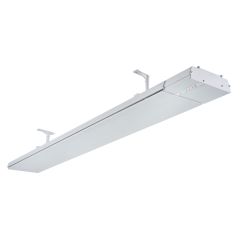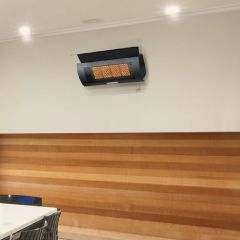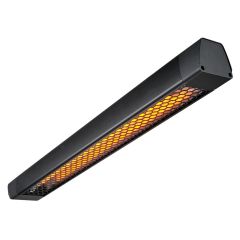- Radiant Outdoor Heaters: Radiant outdoor heaters use infrared heat to warm up the surrounding air, making them ideal for outdoor spaces with high ceilings or for large gatherings. They emit a warm glow and can reach temperatures of up to 1,500 degrees Fahrenheit. Pros of radiant outdoor heaters include their high heating capacity, efficiency, and low operating costs. However, they require electricity or gas to operate, and their heat can be affected by wind.
- Outdoor Infrared Heaters: Outdoor infrared heaters also use infrared heat to warm up the surrounding air, but they emit a softer, more diffuse glow than radiant outdoor heaters. They are ideal for outdoor spaces with low ceilings or for smaller gatherings. Pros of outdoor infrared heaters include their ability to heat people and objects directly, their low operating costs, and their ability to operate on electricity or gas. However, they may not be as efficient as radiant outdoor heaters and their heat can be affected by wind.
- Radiant Patio Heaters: Radiant patio heaters are designed specifically for outdoor use and are often used on patios or in outdoor seating areas. They emit heat in a circular pattern, creating a warm, comfortable environment for guests. Pros of radiant patio heaters include their ability to provide a warm, even heat, their low operating costs, and their durability. However, they may require a dedicated gas line or electricity to operate.
- Outdoor Bar Heaters: Outdoor bar heaters are designed to provide heat to small, enclosed spaces, such as outdoor bars or dining areas. They emit heat in a circular pattern and are often mounted on a pole or stand. Pros of outdoor bar heaters include their ability to provide targeted heat, their low operating costs, and their ease of use. However, they may not be suitable for larger outdoor spaces.
- Wall Mounted Outdoor Heaters: Wall mounted outdoor heaters are designed to be mounted on a wall or ceiling, making them ideal for small outdoor spaces or for spaces where floor space is at a premium. They emit heat in a circular pattern and are often controlled by a remote or thermostat. Pros of wall mounted outdoor heaters include their ease of installation, their low operating costs, and their ability to provide targeted heat. However, they may not be suitable for larger outdoor spaces.
- Outdoor Wall Heaters: Outdoor wall heaters are similar to wall mounted outdoor heaters, but they are designed to be permanently mounted on a wall. They emit heat in a circular pattern and are often controlled by a remote or thermostat. Pros of outdoor wall heaters include their ease of installation, their low operating costs, and their ability to provide targeted heat. However, they may not be suitable for larger outdoor spaces.
- Outdoor Gas Heaters: Outdoor gas heaters are powered by natural gas or propane and are often used in larger outdoor spaces or commercial settings. They emit heat in a circular pattern and can provide a large amount of heat quickly. Pros of outdoor gas heaters include their high heating capacity, their low operating costs, and their ability to provide heat even in windy conditions. However, they may require professional installation and maintenance.
- Outdoor Electric Heaters: Outdoor electric heaters are powered by electricity and are often used in smaller outdoor spaces or residential settings. They emit heat in a circular pattern and are often controlled by a remote or thermostat. Pros of outdoor electric heaters include their ease of use, their low operating costs, and their ability to provide targeted heat. However, they may not be suitable for larger outdoor spaces.











































































































